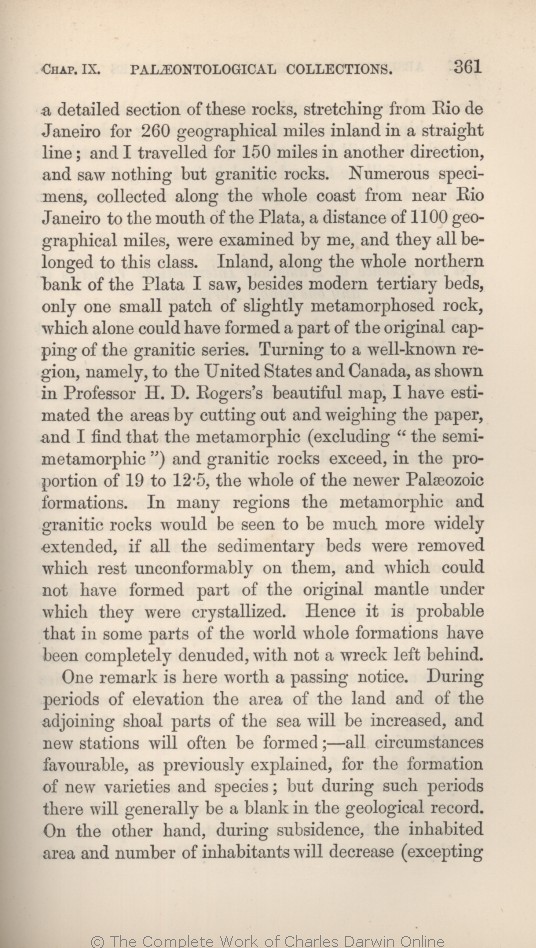gives a detailed section of these rocks, stretching from Rio de Janeiro for 260 geographical miles inland in a straight line; and I travelled for 150 miles in another
direction, | direction, 1869 1872 | | direction 1861 1866 |
| examined by 1866 1869 1872 | | shown 1861 |
| "the 1866 1869 1872 | | "the 1861 |
| semi-metamorphic") 1866 1869 1872 | | semi-metamorphic") 1861 |
| 12.5, 1866 1869 |
| 12.5, not only the true coal measures, well known to be here developed in extraordinary force, but likewise the Umbral series, which together compose 1861 |
| 12.5, 1872 |
| of the newer 1866 1869 1872 |
| newer 1861 |
| formations. 1866 1869 1872 | | formation. 1861 |
| rocks 1866 1869 1872 | | areas 1861 |
| seen to be much more widely extended, if 1866 1869 |
| greatly increased in size, if we could remove 1861 |
| found much more widely extended than they appear to be, if 1872 |
| were removed which 1866 1869 1872 |
| which 1861 |
| OMIT 1866 1869 1872 |
| at the line of junction have not been metamorphosed, showing that they 1861 |
| they 1866 1869 1872 | | the 1861 |
| ..... 1866 1869 1872 | | granitic rocks 1861 |
| formations 1869 1872 | | formations, 1861 1866 |
| OMIT 1869 1872 |
| marking at least sub-stages in the several successive geological epochs, 1861 1866 |
|









